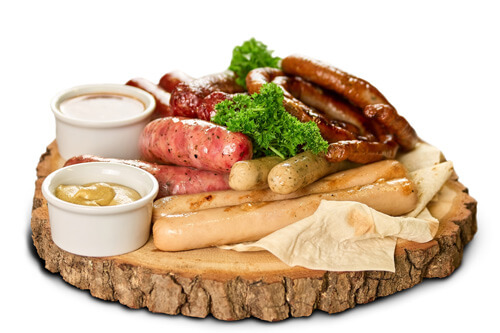Techniques of Braising
When you think of braising, you think of comfort food. From the wafting of the aroma as it cooks and as the plates are carried to the table to its savory down-home “stick to your ribs” flavor, braising has long been popular with families and customers. Pot roast is perhaps the most famous of all braised dishes. For years, osso buco and coq au vin were the most famous restaurant version of braising. Then short ribs seemed to take their place.
Chefs Love Braising
The classic technique produces wonderful food that is not only savory and satisfying but is quite economical. Braising tends to use lesser-quality cuts of meat, so food costs are lower, and it requires little kitchen labor.
In its basic form you season the meat, dredge in flour, shake off excess, sear the meat, deglaze the pan, add in a flavorful liquid covering the meat about half way, add some aromatics, cover tightly and put it in the oven, ignoring it for an hour or two, turn over the meat, add more liquid if necessary, cover it again, and return it to the oven. After another hour or two you have a wonderful dish with a flavorful liquid that can be served as is or readily turned into a sauce. Furthermore, if you know how to braise, then you know how to make a stew. The only key difference is that braises tend to use larger cuts of meat, while stews use smaller.
The Question Then Becomes
How to teach braising in 50 minutes? For years I tried to teach braising in a limited time period using the 1987 Julia Child video “The Way to Cook Vegetables.” She braises Belgium endive. The results weren’t too successful, and the young culinarians—let’s face it—weren’t eager to cook or eat endive.
I struggled with the problem and finally came up with a two-word solution: Polish sausage. Skin-on Polish sausage can be browned and then braised quickly with aromatics yet won’t fall apart. Of course, kielbasa, garlic sausage, linguisa, andouille or other firm-cooked sausage works, as well. (If possible, you may wish to avoid skinless products; they tend to fall apart more easily.) The advantages to using cooked sausages for braising are:

- Sausages are relatively inexpensive and are easy to portion out.
- Young culinarians aren’t afraid to handle, cook or eat them.
- Whether practicing professionally or at home, you don’t have to spend a lot of money on food to make delicious meals.
- Because these sausages are fully cooked, food-safety issues are minimized.
Finally, the beauty of using something like Polish sausage for braising is that you can also use it in other forms of cooking (steaming, simmering, poaching, broiling, grilling, roasting, sautéing, etc.), which allows you to compare the different techniques—and the different tastes they yield—all with the same product.
This article was originally published by the Center for Advancement of Food Service Education (CAFÉ) in September, 2010. We thank the Center for Advancement of Food Service Education for allowing Adam to reprint his articles with Flagship Culinary. If you would like more information on Adam’s promotion programs, or want to know about additional articles, please contact him at aweiner@flagshipinc.com.
